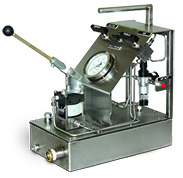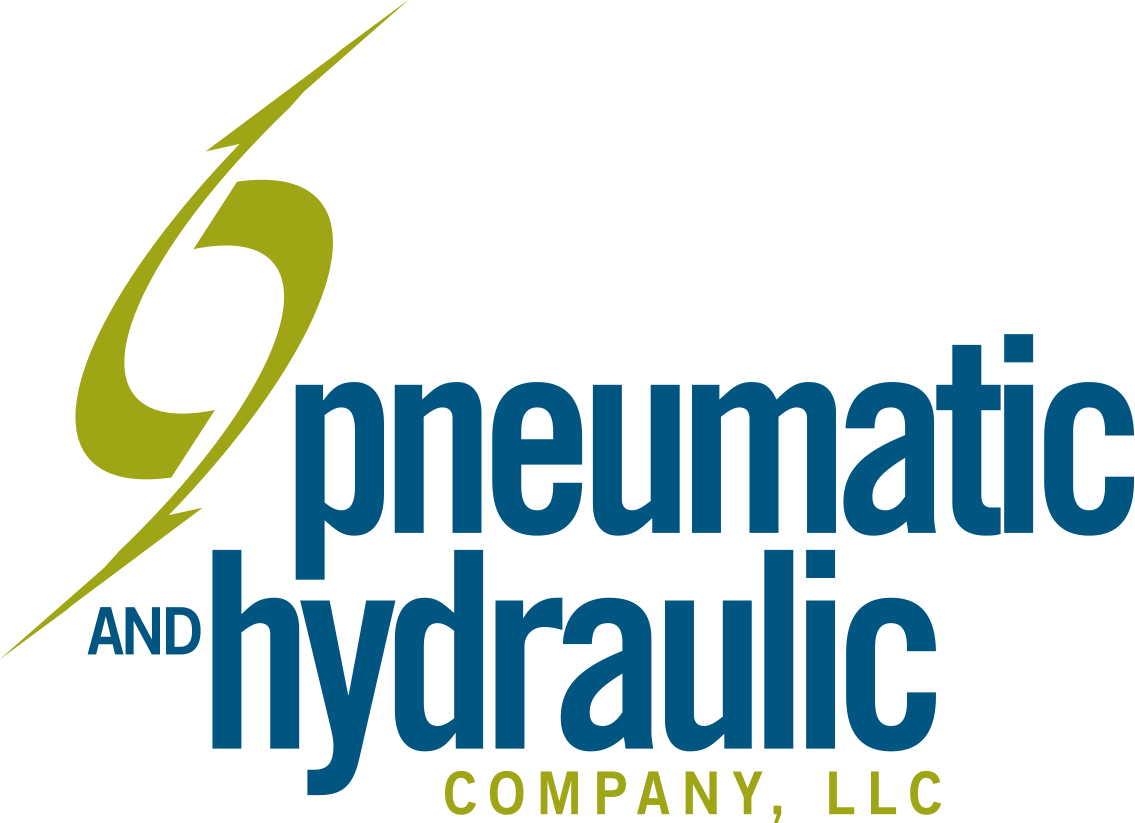One of the main components of any hydraulic drive system is the hydraulic pump. Without some sort of hydraulic pump, the fluid in a hydraulic system would just sit there. The pump is the component that converts mechanical energy into hydraulic pressure, which in turn moves fluid to produce force in the cylinder.
What are Hydraulic Hand Pumps?
 Hydraulic hand pumps use human power as the input to create a combination of pressure and flow that then creates hydraulic energy. Hydraulic fluid is delivered under pressure directly applied from manual effort under the simple principle of the handle providing leverage to an internal piston. The piston then forces hydraulic fluid into the cylinder port. Water and hydraulic fluid are the most common fluids, but a variety of pressure media could potentially be used.
Hydraulic hand pumps use human power as the input to create a combination of pressure and flow that then creates hydraulic energy. Hydraulic fluid is delivered under pressure directly applied from manual effort under the simple principle of the handle providing leverage to an internal piston. The piston then forces hydraulic fluid into the cylinder port. Water and hydraulic fluid are the most common fluids, but a variety of pressure media could potentially be used.
The hydraulic energy generated is used to supply pressure for testing, adjusting, and calibrating different types of measuring instruments or tools. Hydraulic hand pumps are commonly used to load and test machinery components, especially when a fine degree of tuning is desired by the user. They are also used in materials handling machinery for raising and lowering heavy objects, which also require a fine degree of control over the movement of the items.
Types of Hydraulic Hand Pumps
There are two types of hydraulic hand pumps available: single-acting hydraulic hand pumps or double-acting hydraulic hand pumps. Single-acting hand pumps exert force on the downstroke only, whereas double-acting hand pumps exert force on both the down and upstroke. For the sake of speed, double-acting hand pumps are the better choice. Not everyone considers these to be the better option since they are more complicated to maintain and repair if things go wrong. Single-acting hand pumps are much simpler in construction and easier to maintain, but it takes twice as long to generate the same amount of pressure and movement with these than with a double-acting hand pump.
Single-action pumps are commonly seen on hydraulic jacks. Double-action hand pumps are used in a wider array of fields. They are in some aircraft hydraulic systems as a source of hydraulic power for emergencies, for testing certain subsystems during preventive maintenance inspections, and can be also used in determining the causes of malfunctions in hydraulic systems. Both types of pumps aim for reduced operational risks, but double-acting hand pumps are more commonly used to increase safety and minimize downtime.
Our Favorite Hydraulic Hand Pumps
One of our favorite brands, Hawe, makes a hydraulic hand pump popular amongst equipment testing companies. Hawe’s hydraulic hand pump types H and HE are single-acting. They draw in oil in one direction and pump it in the opposite direction. Their hand pump type HD is double-acting. It pumps and draws in the same quantity of oil in the pressure line during the forward and backward movement of the hand lever. Both types are available for pipe connection and manifold mounting. Contact the hydraulic experts at PHC to learn more about Hawe’s line of hydraulic hand pumps and how you can utilize them.
